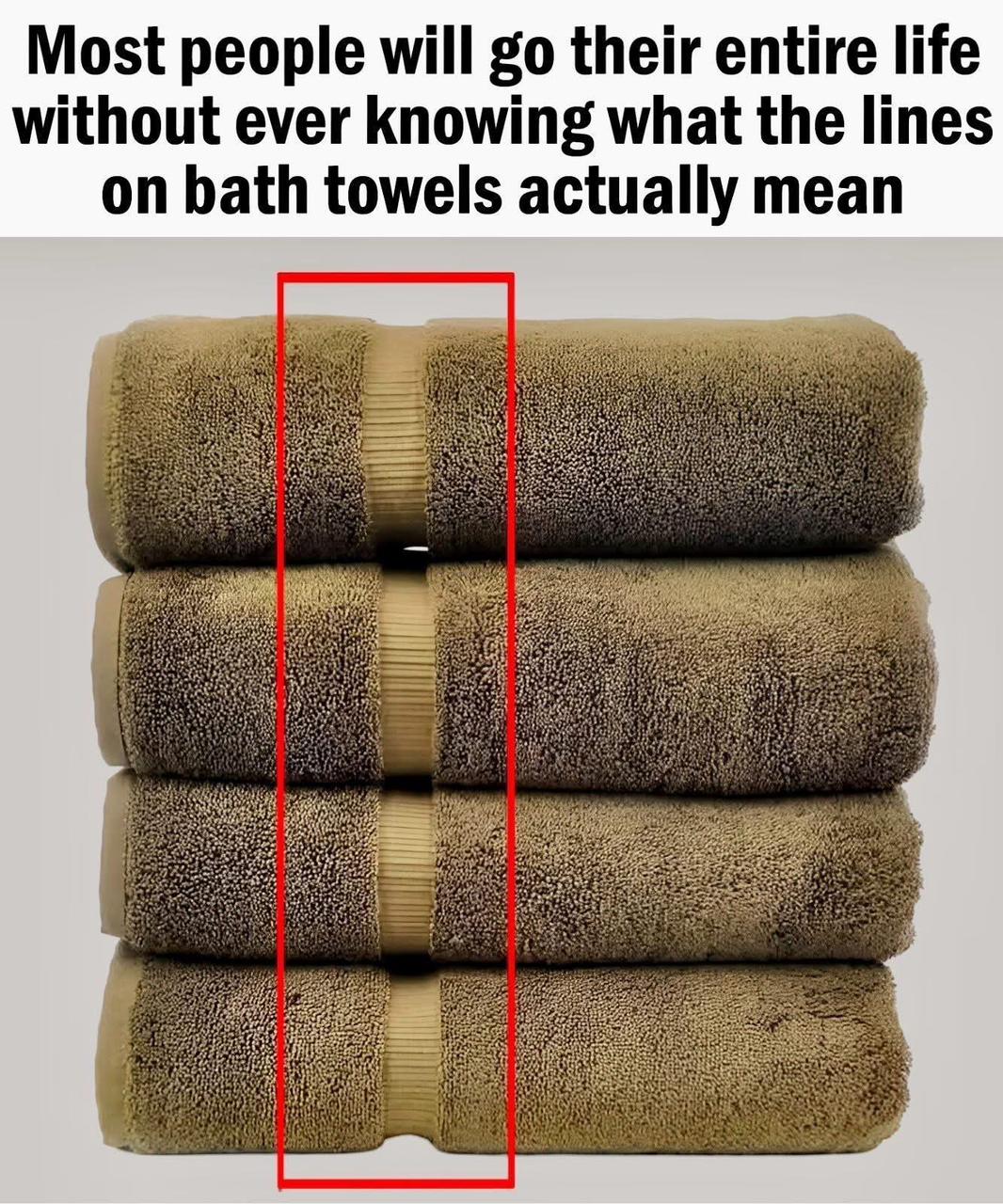Bath towels are an essential part of everyday life, but most of us rarely think about the small design details that make them work so well. Among these details are the lines or patterns often seen woven into the fabric. While they might appear to be simple decorations, these lines actually play important roles in improving the towel’s performance and durability. Once you understand their purpose, you’ll gain a new appreciation for the craftsmanship that goes into making even the most ordinary household item.

The lines on bath towels aren’t just a matter of style—they’re part of a well-thought-out design that serves multiple practical functions. These lines are created using specialized weaving techniques that help enhance how the towel absorbs water, strengthen the fabric’s structure, and improve how it feels against the skin. What might seem like a decorative flourish is actually the result of thoughtful engineering designed to improve the towel’s usefulness and lifespan.
According to a feature on Upworthy, these lines also play a major role in the towel’s ability to pull moisture away from the skin—a function known as moisture wicking. Though often overlooked, this subtle feature is critical to how effective a towel is in daily use. It’s not just about drying off quickly—it’s about how efficiently and comfortably the towel performs its job.
One of the key benefits of these lines is increased absorbency. The specific weaving method used to create the lines increases the surface area of the towel, which helps it soak up more water faster. In addition to absorbing better, the lines help the towel dry more quickly by creating air channels that improve airflow. That means your towel is less likely to stay damp, which helps prevent the growth of mildew or bacteria—an important bonus for any household.
There’s also a practical, everyday benefit to the presence of these lines. They often act as visual guides, making it easier to fold or hang the towel in a neat and uniform way. This thoughtful detail helps towels maintain their shape over time, which means they’ll continue looking tidy and presentable in your bathroom, even after frequent use.
Some towels also feature raised patterns known as tread lines. These are more than just texture—they help extend the towel’s life. Tread lines are woven into the fabric to reinforce the towel’s structure, which helps prevent fraying, warping, or thinning even after countless washes. Clara Brooks, a textile specialist, explains, “Tread lines are designed to help the towel keep its plush feel and thickness. They act as a cushion, protecting the fibers and reducing everyday wear and tear.” These lines not only preserve the towel’s appearance but also its comfort and effectiveness.
Another important feature in towel design is the dobby weave. This weaving method uses small, geometric patterns to create the lines commonly seen on high-quality towels. While these patterns certainly add visual interest, their main job is to make the fabric more stable and less likely to stretch out or become misshapen over time. Weaver Jonathan Lee says, “The dobby weave creates a compact, sturdy fabric that resists pulling and sagging, so the towel stays looking and feeling like new even with heavy use.” Thanks to the dobby weave, your towels will stay soft, well-formed, and reliable for years to come.
Equally important are the dobby borders—the tightly woven bands usually found at the ends of towels. These are sometimes mistaken as purely decorative, but their main function is to protect the towel’s edges. Because towel edges are particularly prone to unraveling or wearing down, dobby borders reinforce them, keeping the towel intact. Clara Brooks notes, “The dobby border works like a frame for the towel. It adds strength where it’s needed most—at the edges. This keeps the towel from falling apart and also gives it a more polished, finished look.” In other words, these borders are a perfect blend of functionality and style.
All of these thoughtful design elements—tread lines, dobby weaves, and reinforced borders—come together to create a product that’s not only pleasant to use but also built to last. Towels might be a basic item we use every day, but the level of detail and care involved in their creation is anything but basic. From how well they absorb moisture to how long they hold up over time, these details are what elevate a towel from a simple piece of cloth to an essential home tool.
So, the next time you step out of the shower and grab your towel, take a closer look at those lines and patterns. They’re more than decoration—they’re the result of generations of textile knowledge, designed to bring you comfort, performance, and durability. Bath towels are one of the most used and washed items in the home, and thanks to smart design choices like these, they remain dependable day after day. What seems like a simple towel is actually a well-engineered product made to meet your needs in the best way possible.





